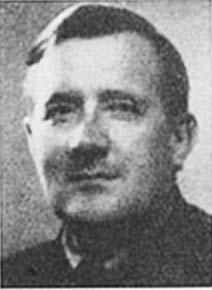Related Research Articles

Trondheim, historically Kaupangen, Nidaros, and Trondhjem, is a city and municipality in Trøndelag county, Norway. As of 2022, it had a population of 212,660. Trondheim is the third most populous municipality in Norway, and is the fourth largest urban area. Trondheim lies on the south shore of Trondheim Fjord at the mouth of the River Nidelva. Among the significant technology-oriented institutions headquartered in Trondheim are the Norwegian University of Science and Technology (NTNU), the Foundation for Scientific and Industrial Research (SINTEF), the Geological Survey of Norway (NGU), and St. Olavs University Hospital.

Nidaros Cathedral is a Church of Norway cathedral located in the city of Trondheim in Trøndelag county. It is built over the burial site of King Olav II, who became the patron saint of the nation, and is the traditional location for the consecration of new kings of Norway. It was built over a 230-year period, from 1070 to 1300 when it was substantially completed. However additional work, additions and renovations have continued intermittently since then, including a major reconstruction starting in 1869 and completed in 2001.
STRABAG SE is an Austrian construction company based in Spittal an der Drau, Austria, with its headquarters in Vienna. It is the largest construction company in Austria and one of the largest construction companies in Europe. The company is active in its home markets Austria and Germany and in all countries of Central, Eastern and South-East Europe, in selected markets in Western Europe, on the Arabian Peninsula, as well as in Canada, Chile, China and India. In these markets STRABAG has subsidiaries or operates on a project-basis.

The Norwegian campaign involved the attempt by Allied forces to defend northern Norway coupled with the resistance of the Norwegian military to the country's invasion by Nazi Germany in World War II.

Lysaker is an area in Bærum Municipality, Akershus County, Norway. Lysaker is the easternmost part of Bærum and borders Oslo proper. Lysaker was initially a farming community, later becoming a residential area. Today it is primarily known as a business and trade area, and a public transport hub. It is considered part of Stor-Oslo, and is home to offices of numerous domestic and international businesses.

The architecture of Norway has evolved in response to changing economic conditions, technological advances, demographic fluctuations and cultural shifts. While outside architectural influences are apparent in much of Norwegian architecture, they have often been adapted to meet Norwegian climatic conditions, including: harsh winters, high winds and, in coastal areas, salt spray.

Dora I is a former German submarine base and submarine pen or bunker built in Trondheim, Norway. Construction of the bunker was undertaken during the Second World War. Nearby is the uncompleted Dora II. Trondheim was traditionally referred to as Drontheim in German, and the name DORA is the letter "D" in the German phonetic alphabet.

Norwegian heraldry has roots in early medieval times, soon after the use of coats of arms first appeared in continental Europe. Some of the medieval coats of arms are rather simple of design, while others have more naturalistic charges. The king-granted coats of arms of later times were usually detailed and complex. Especially in the late 17th century and the 18th century, many ennobled persons and families received coats of arms with shields containing both two and four fields, and some even with an inescutcheon above these.

Vy Buss, formerly branded as Nettbuss, is the largest bus company in Norway, owned by Vy. It was established on 10 February 2000 as the continuation of the bus operations from former NSB Biltrafikk. In addition to bus services in major parts of Norway, it also operates buses in Sweden through subsidiaries.

Grieg Group is a family-owned business headquartered in Bergen, Norway.

Ålesund, sometimes spelled Aalesund in English, is a municipality in Møre og Romsdal County, Norway. It is part of the traditional district of Sunnmøre and the centre of the Ålesund Region. The town of Ålesund is the administrative centre of Ålesund Municipality, as well as the principal shipping town of the Sunnmøre district. The town is a sea port and is noted for its concentration of Art Nouveau architecture. Although sometimes internationally spelled by its older name Aalesund, this spelling is obsolete in Norwegian. However, the local football club Aalesunds FK still carries that spelling, having been founded before the official change.

Cappelen is a Norwegian family of German origin. Johan von Cappelen immigrated to Norway in 1653 and became bailiff in Lier. A number of his descendants were businessmen, land owners, civil servants and politicians. The family is especially known for the former publishing company J.W. Cappelens Forlag, one of the oldest publishing houses of Norway. Variants of the name Cappelen are also used throughout Germany by many other families.
Trond R. Reinertsen is a Norwegian economist and business leader. He has a Ph.D from the University of Utah. From 1978 to 1997 he was chief director of the Norwegian Bank Association.

Ludvik Buland was a Norwegian trade unionist. He chaired the Norwegian Union of Railway Workers, but was imprisoned and died during the occupation of Norway by Nazi Germany.
Skylark B was a radio communications group that operated in Trondheim during the German occupation of Norway. The group was established and led by Erik Welle-Strand, who was a student in Trondheim. Preparations were done in 1940, when a transmitter was brought in from the United Kingdom, and the communications were effective from the end of January to September 1941. Their station, called Sealion, was one of two radio stations that maintained the radio communication between Norway and the UK Secret Intelligence Service in this period. The transmitter was located in Herbernheia in the recreational area Bymarka. A large number of telegrams were sent while the group was operational. The group was eventually rolled up by the Gestapo in September 1941. Several of the operators were imprisoned. Eleven members of the Skylark B group were sent to German death camps, and seven of these later died in Germany. Others managed to flee from the country, among these were Leif Tronstad, Einar Johansen, Bjørn Rørholt and Olav Skeie.
Elias Anton Cappelen Smith was a Norwegian American chemical engineer, civil engineer and metallurgist. He pioneered copper production in the early 20th century. Among his achievements were the Peirce–Smith converter and the Guggenheim process.

Elias Karelius Johansen Volan was a Norwegian trade unionist.
Fagopposisjonen av 1940 was a grouping among Norwegian trade unionists in 1940, after the German invasion of Norway.
The theatre strike in Norway in 1941 was a conflict between Norwegian actors and Nazi authorities, during the German occupation of the country. The strike involved theatres in the cities of Oslo, Bergen and Trondheim. The strike started on 21 May 1941, as a response to the revocation of working permits for six actors, after they had refused to perform in the Nazified radio. It lasted for five weeks.
William H. Peirce was an American civil engineer and metallurgist, who pioneered copper production in the early 20th century. Among his achievements was the Peirce-Smith converter, invented with Elias Anton Cappelen Smith.
References
- ↑ Johansen, O.J. (1936). Den tusenårige by ved Nidelven. Trondhjem fra Olav Tryggvason til Håkon VII (PDF) (in Norwegian).
- ↑ Elias Anton Cappelen Smith (Store norske leksikon)